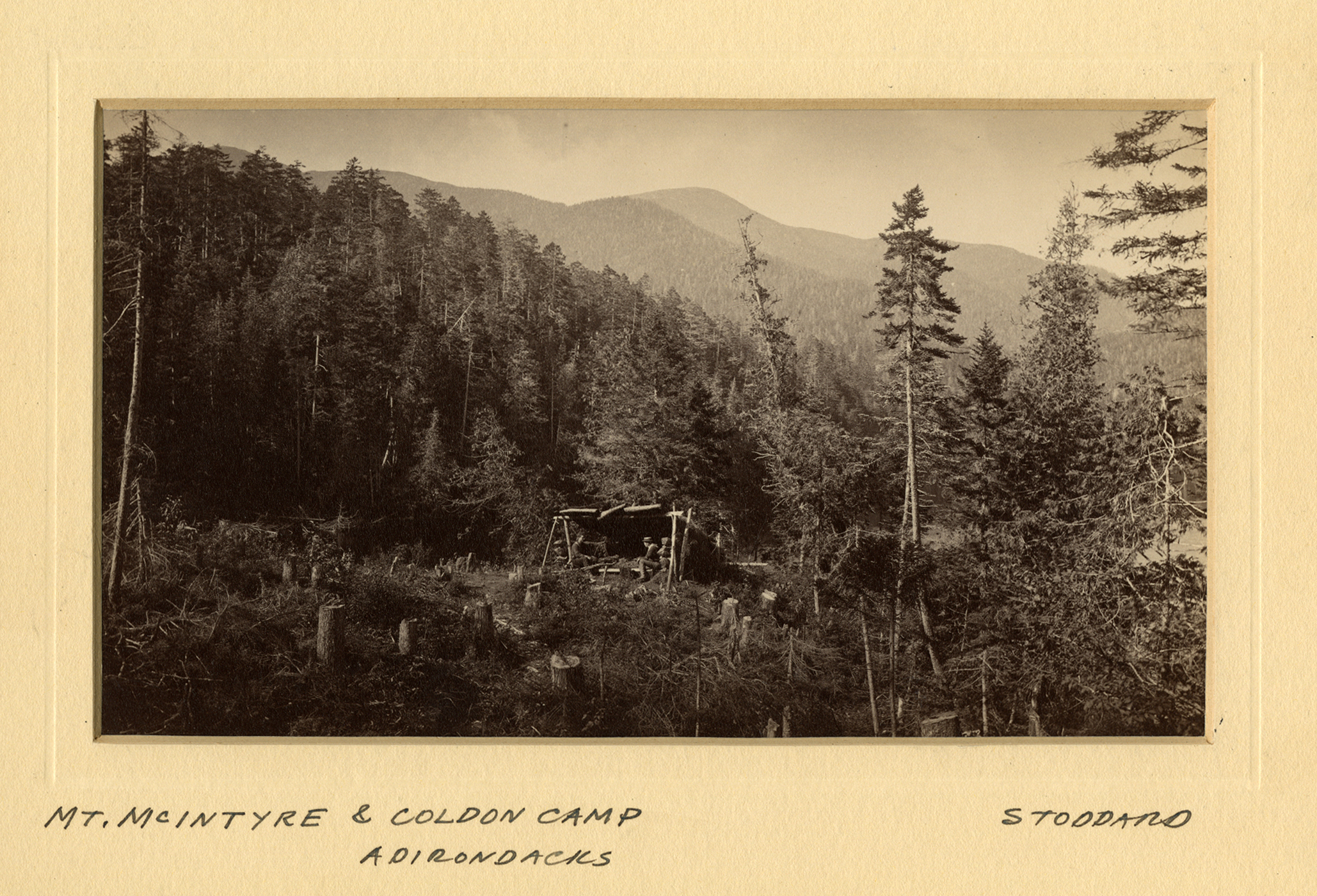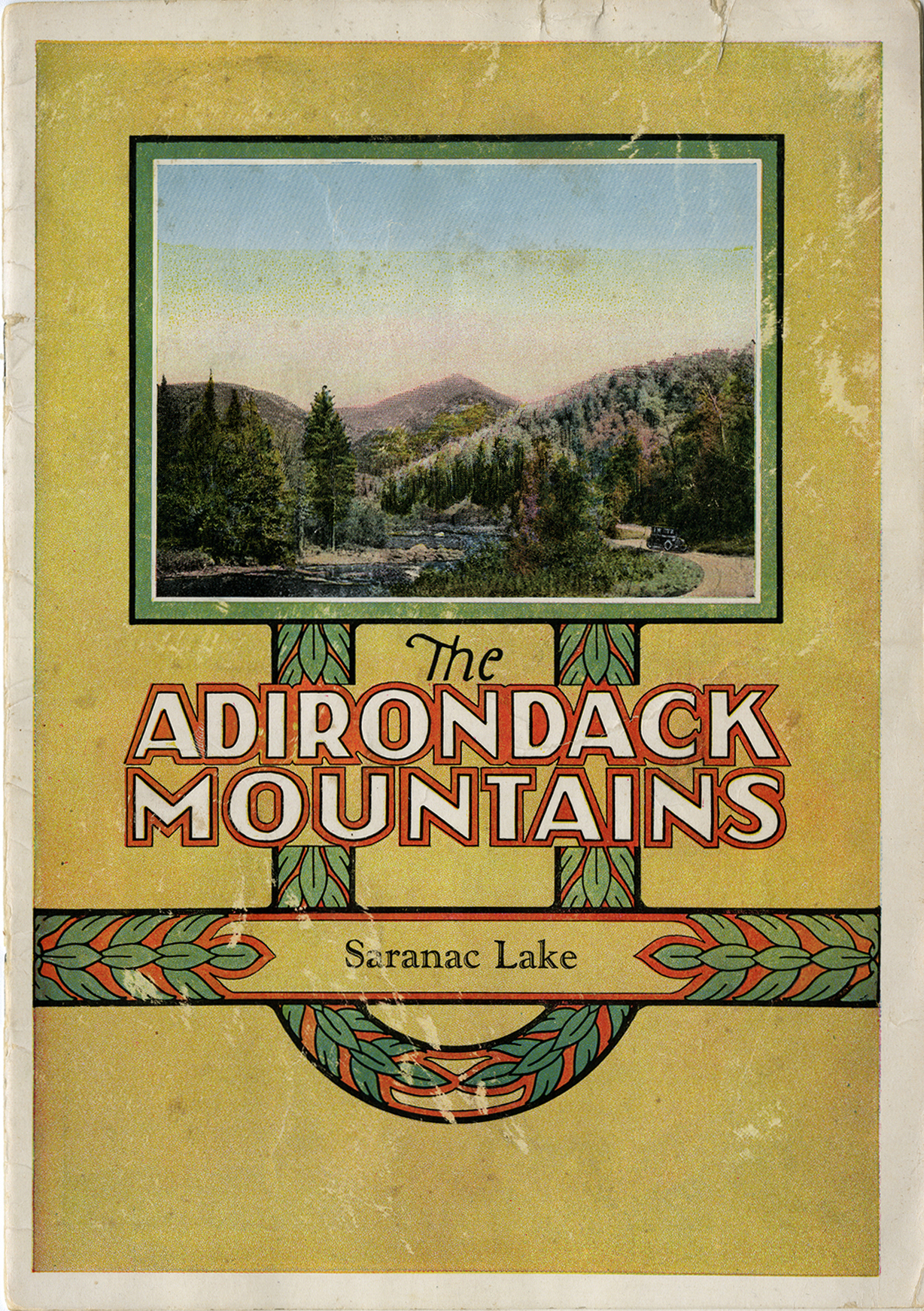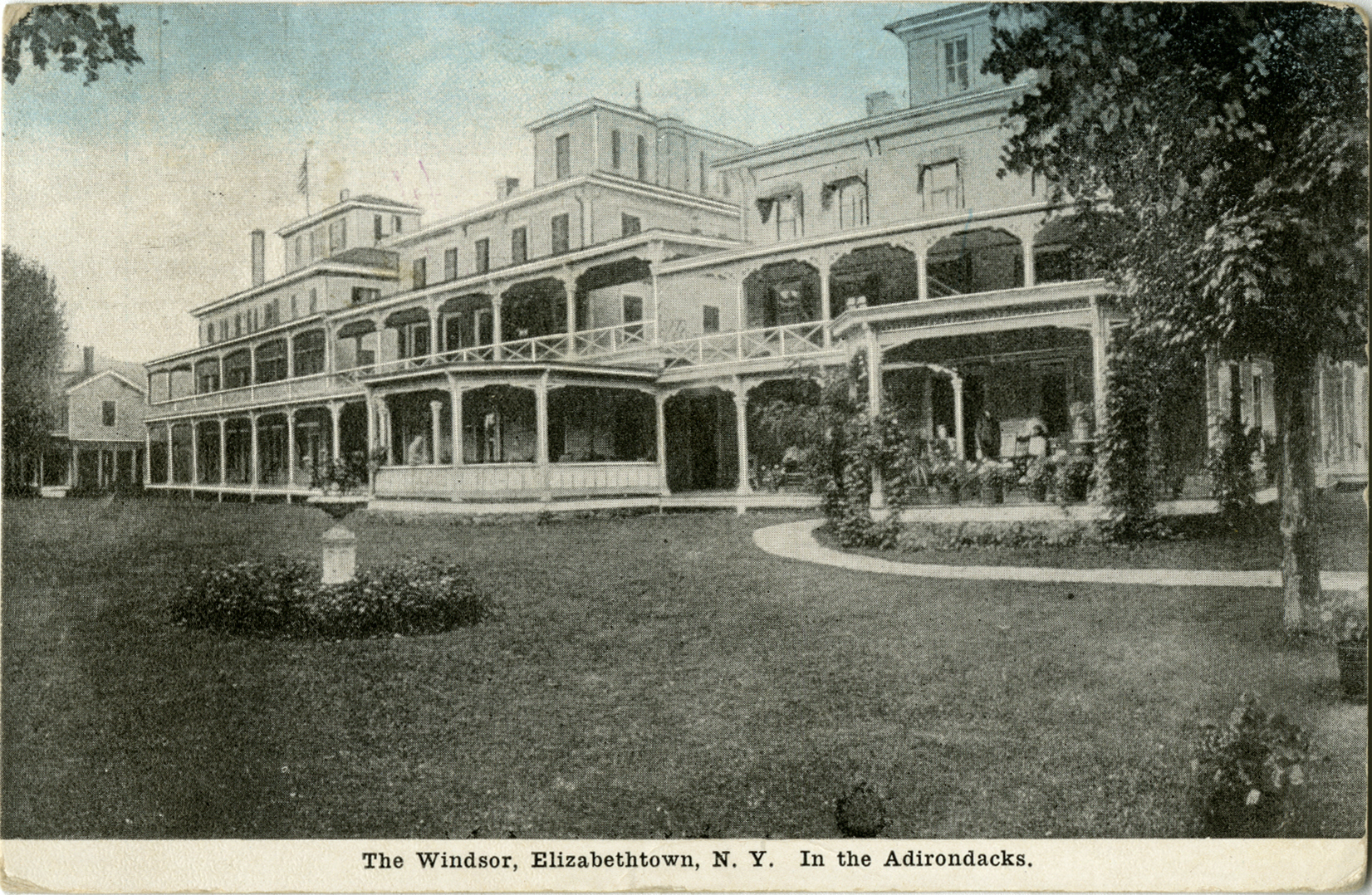The Adirondack Collection consists of ephemera, promotional literature, maps, magazines, commercial photo albums, picture books, Seneca Ray Stoddard photographs, and 2 groups of unidentified photographs. Also included are the records of Citizens to Save the Adirondack Park, from 1975-1982.
Collection Overview
The Adirondack Collection consists of ephemera, promotional literature, maps, magazines, commercial photo albums, picture books, Seneca Ray Stoddard photographs, and 2 groups of unidentified photographs. Also included are the records of Citizens to Save the Adirondack Park, from 1975-1982.
Background
The Adirondack Mountains are a range of peaks in Northeastern New York State related geologically to the Appalachian Mountains to the south and the Laurentian range in Quebec to the north. The mountains consist of very ancient rock, about a billion years old, which has been uplifted into a “dome” over the last 5 million years or so.
Human habitation of the Adirondack region is quite recent. Native tribes of Mohawk and Algonquin Indians hunted in the region but did not settle there. The first Europeans explored the area in the mid 17th century. As settlement of the region began, the vast timber resources of the Adirondack forest were exploited for building materials and fuel. This exploitation continued for nearly 200 years as demand for wood for timber and land for farming and mining grew. By the mid-1800s, public appreciation for the remote Adirondack wilderness began to increase as writers and artists romanticized the region. Tourism increased as the concept of the “Great Camp” became popular. Larger numbers of city dwellers came as railroads made the region more accessible.
By the late 19th century, concern over the depletion of the Adirondack’s resources resulted in calls for the region to be preserved “forever” as wild forest. In 1885, the Adirondack Forest Preserve was created and in 1892 the Adirondack Park was formally recognized and given the permanent protection of the New York State Constitution two years later, thanks to the pioneering work of conservationists like Verplanck Colvin and Seneca Ray Stoddard.
The Adirondack Park is over six million acres in size and remains a mix of state-owned and privately held land. Development of land within the park is regulated by the Adirondack Park Agency, created by New York State in 1971. Much of the private land held by timber companies and other large landowners are protected from development by easements purchased by the State. Other lands have been purchased by environmental groups such as The Nature Conservancy.
Balancing the preservation of public access to the natural beauty and the undeveloped nature of the Adirondacks and the rights of landowners to privately enjoy and develop land within the Park continues to be a major challenge for those who live, work and recreate in the Adirondacks.


